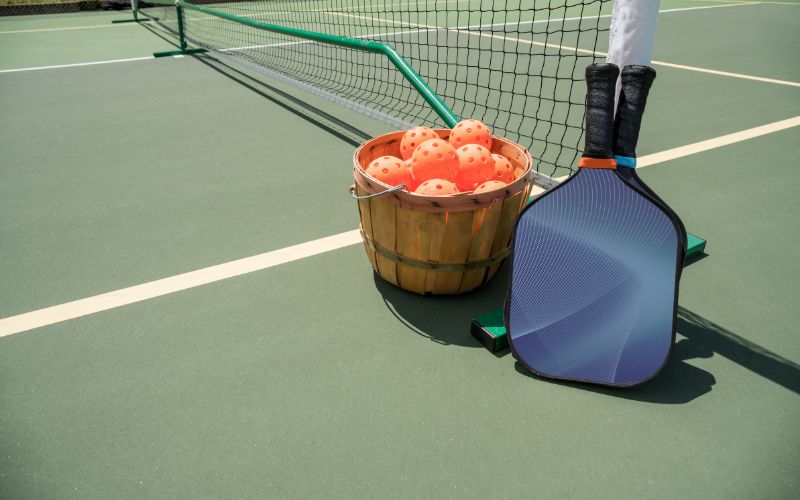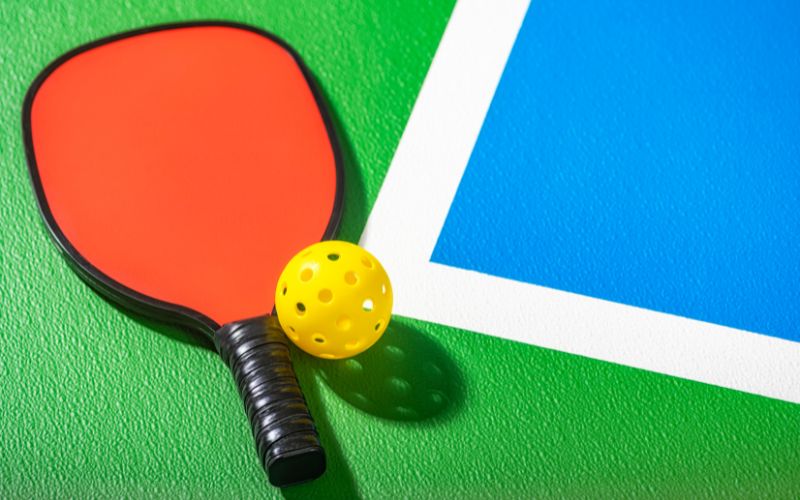Pickleball, a sport that combines elements of tennis, badminton, and table tennis, has been gaining popularity across the globe. As players delve deeper into the nuances of the game, one question that frequently arises is, “What weight pickleball paddle should I use?” The weight of your pickleball paddle can significantly impact your performance, power, and control on the court. In this comprehensive guide, we’ll explore the factors to consider when selecting the ideal weight for your pickleball paddle.
Three Primary Factors in Choosing Pickleball Paddle
Weight: The weight of a pickleball paddle is a critical consideration as it directly impacts various aspects of gameplay. Paddle weight affects the power, control, maneuverability, and comfort experienced by the player.
Lighter paddles typically offer greater maneuverability and ease of handling, making them suitable for players who prioritize agility and finesse. Conversely, heavier paddles provide more power behind shots and enhanced stability, which can benefit players seeking authoritative strokes and control over the ball.
Understanding the weight range that aligns with your playing style and preferences is essential for optimizing performance on the court.
Grip Size: The grip size of a pickleball paddle refers to the circumference of the handle. Choosing the appropriate grip size is crucial for comfort, control, and preventing hand fatigue during extended play sessions.
Paddles with larger grip sizes offer more surface area for the hand to grip, providing stability and control over shots. Conversely, paddles with smaller grip sizes allow for quicker wrist movements and may suit players with smaller hands or those who prefer a more compact grip.
Selecting the right grip size ensures a comfortable and secure hold on the paddle, enabling players to maintain consistency and precision in their strokes.
Materials: The materials used in constructing a pickleball paddle significantly influence its performance, durability, and feel. Paddles may feature a variety of materials, including graphite, carbon fiber, composite, wood, and aluminum. Graphite and carbon fiber paddles are prized for their lightweight construction, durability, and superior power transfer.
Composite paddles offer a balance of power and control, making them suitable for players seeking versatility. Wooden paddles, although less common, provide a traditional feel and may appeal to players who prefer a classic aesthetic.
Aluminum paddles, while durable, are typically heavier and less maneuverable compared to other materials. Understanding the characteristics of different materials allows players to choose a paddle that matches their playing style, performance requirements, and budget constraints.
Understanding Paddle Weight
Pickleball paddles come in a variety of weights, typically ranging from 7 to 12 ounces. The weight of the paddle plays a crucial role in how it feels during gameplay and can affect your playing style and technique.
Lighter Paddles: Speed and Maneuverability
Lightweight paddles, weighing between 7 to 9 ounces, offer increased speed and maneuverability. Players who prefer quick reactions and swift shots often opt for lighter paddles. A lightweight paddle allows for faster swings, making it easier to react to fast-paced exchanges at the net.
Midweight Paddles: Balance of Power and Control
Midweight paddles, falling between 9 to 11 ounces, strike a balance between power and control. These paddles provide stability for controlled shots while still offering enough weight behind the ball for added power. Many players, especially those transitioning from other racket sports like tennis or table tennis, find midweight paddles comfortable and versatile.
Heavier Paddles: Power and Stability
Heavier paddles, typically weighing 11 to 12 ounces, are favored by players seeking maximum power and stability. The extra weight behind each shot can create powerful drives and smashes, making it challenging for opponents to return the ball effectively. However, heavier paddles may require more strength and can lead to fatigue during extended play sessions.
Factors Influencing Paddle Weight Selection
When determining the pickleball paddle weight that suits you best, several factors come into play:
Playing Style and Preferences
Your playing style and personal preferences should guide your choice of paddle weight. Consider whether you prioritize power, control, maneuverability, or a combination of these factors in your gameplay.
Physical Strength and Endurance
Your physical strength and endurance level also influence the ideal paddle weight for you. While lighter paddles offer speed and agility, heavier paddles provide more momentum but may require additional strength to wield effectively.
Risk of Injury
Paddle weight can impact the risk of injury, particularly concerning conditions like tennis elbow. Heavier paddles may exert more strain on the arm and shoulder joints, potentially increasing the risk of overuse injuries over time.
Transition from Other Racket Sports
Players transitioning from tennis, table tennis, or other racket sports may find the weight of their previous racket influences their paddle preference. Those accustomed to heavier rackets might feel more comfortable with midweight or heavier pickleball paddles.
Conclusion
In conclusion, the weight of your pickleball paddle is a critical factor that can significantly impact your performance and enjoyment of the game. Whether you prefer the speed and agility of a lightweight paddle or the power and stability of a heavier one, it’s essential to consider your playing style, physical abilities, and risk of injury when making your selection. By understanding the nuances of paddle weight and seeking expert guidance, you can find the perfect balance between power, control, and maneuverability for an optimal pickleball experience.
FAQs: What Weight Pickleball Paddle Should I Use?
1. What factors should I consider when selecting the weight of my pickleball paddle?
When choosing the weight of your pickleball paddle, consider factors such as your playing style, physical strength and endurance, risk of injury, and any transition from other racket sports. Each player’s preferences and requirements may vary, so it’s essential to find a paddle weight that aligns with your individual needs.
2. How does paddle weight impact gameplay?
Paddle weight directly influences various aspects of gameplay, including power, control, maneuverability, and comfort. Lighter paddles offer greater speed and agility, making them suitable for quick reactions and swift shots. Heavier paddles provide more power behind each stroke and enhanced stability, which can be advantageous for players seeking authoritative shots and control over the ball.
3. Are there specific weight ranges for different playing styles?
Yes, there are general weight ranges associated with different playing styles. Lightweight paddles, ranging from 7 to 9 ounces, are favored by players who prioritize speed and maneuverability. Midweight paddles, falling between 9 to 11 ounces, offer a balance of power and control. Heavier paddles, typically weighing 11 to 12 ounces, provide maximum power and stability on the court.
4. Can paddle weight affect the risk of injury?
Yes, paddle weight can impact the risk of injury, particularly concerning conditions like tennis elbow. Heavier paddles may exert more strain on the arm and shoulder joints, potentially increasing the risk of overuse injuries over time. It’s essential to choose a paddle weight that minimizes strain and discomfort during gameplay, especially for players prone to injury or those with pre-existing conditions.
5. How can I determine the ideal weight for my pickleball paddle?
Determining the ideal weight for your pickleball paddle involves considering your playing style, physical capabilities, and personal preferences. Experimenting with paddles of different weights during practice sessions can help you assess which weight feels most comfortable and enhances your performance on the court. Additionally, seeking guidance from experienced players or pickleball experts can provide valuable insights into selecting the right paddle weight for you.






